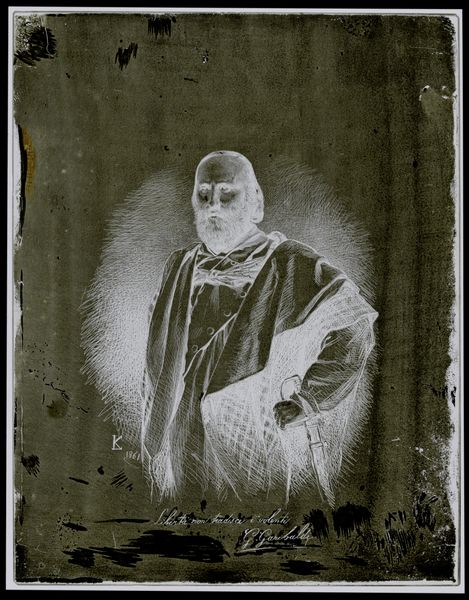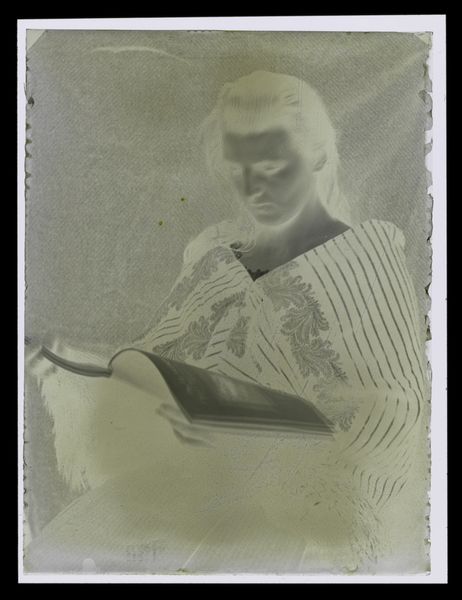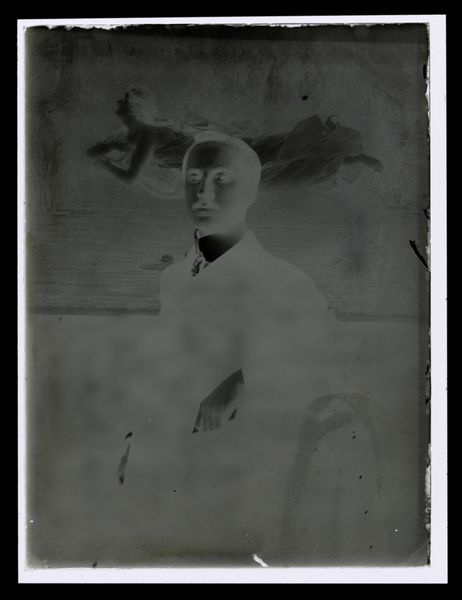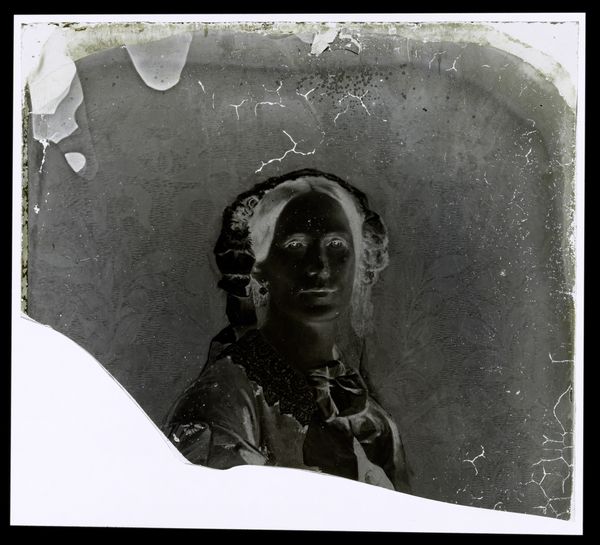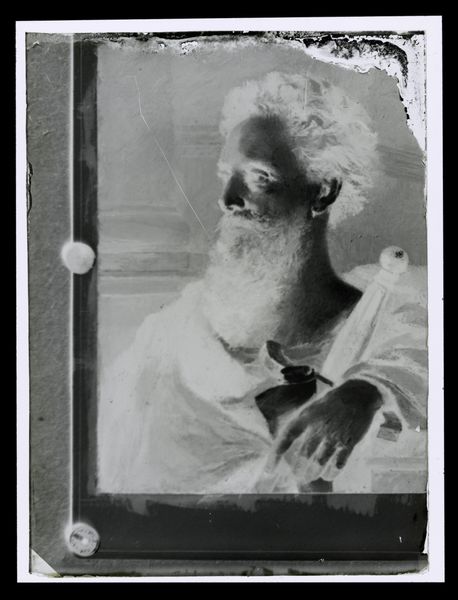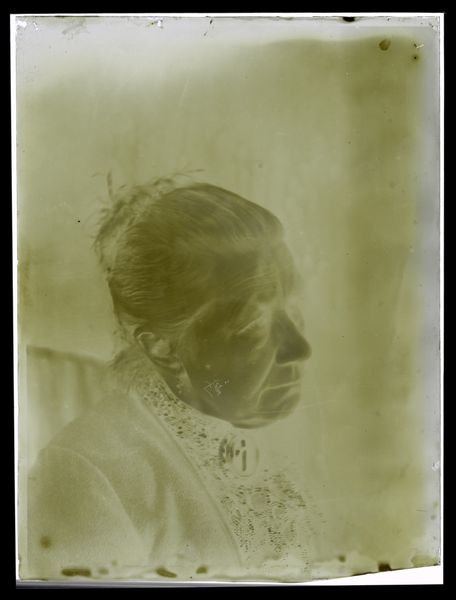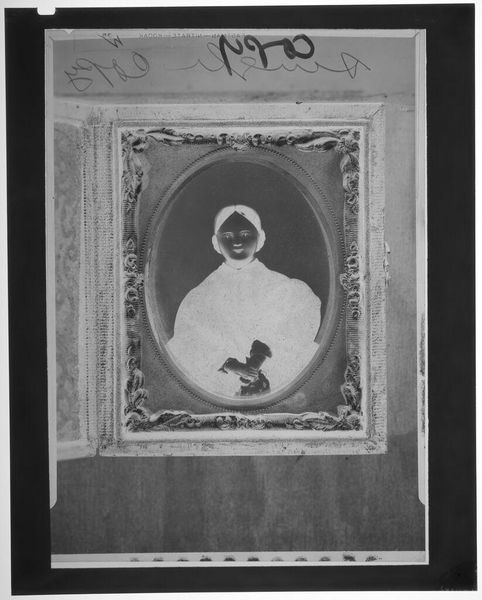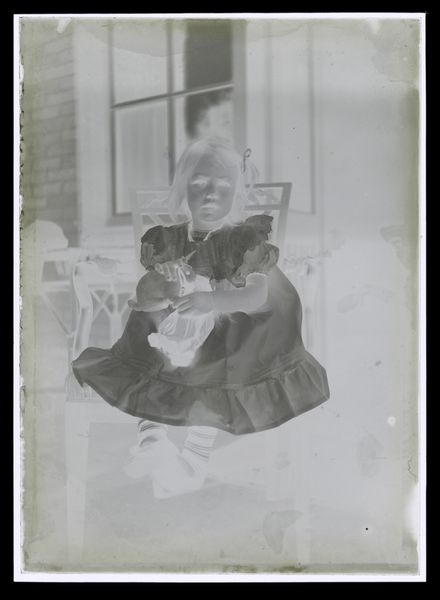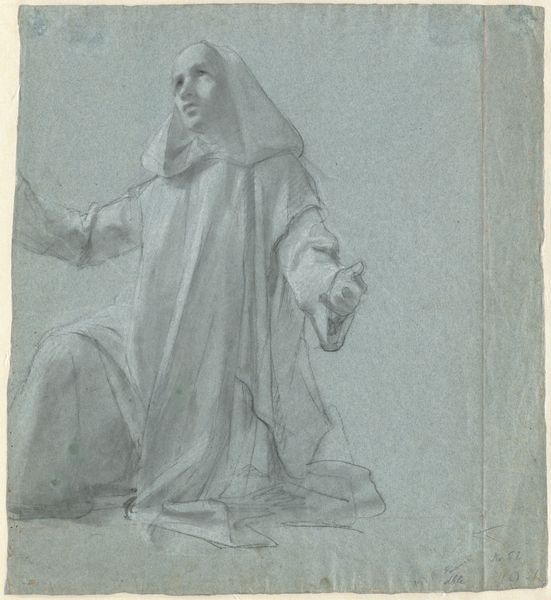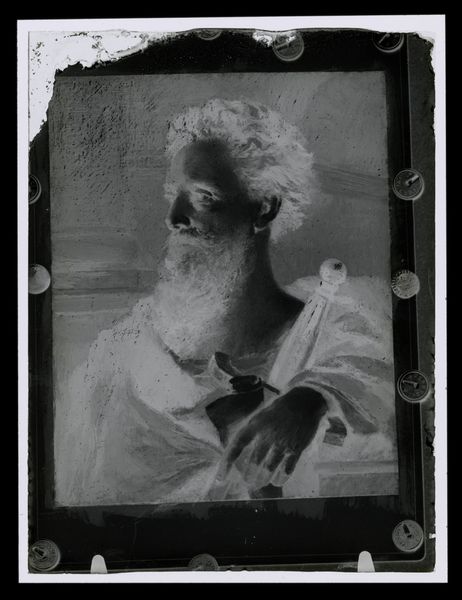
Fotoreproductie van een geschilderd portret van een onbekende heilige met drinkglas c. 1865 - 1900
0:00
0:00
print, photography, glass, gelatin-silver-print
#
portrait
# print
#
sculpture
#
photography
#
glass
#
gelatin-silver-print
#
symbolism
Dimensions: height 180 mm, width 156 mm
Copyright: Rijks Museum: Open Domain
Curator: Here we have a gelatin silver print, dating from approximately 1865 to 1900, titled "Photoreproduction of a painted portrait of an unknown saint with a drinking glass." It's after a painting, seemingly, though the original artist remains anonymous. Editor: The figure emanates an almost ghostly pallor, offset by this very fragile-seeming and distressed medium. There's something melancholic about it. Curator: Absolutely, the history of photographic reproduction is fascinating in its own right. It was about disseminating images, religious or otherwise, to a broader audience. To provide readily-accessible reproductions, effectively democratizing art consumption during this period. Editor: And while the intention might have been democratic, I see something else happening here too. Taking religious iconography out of sacred spaces transforms its meaning. Did accessibility increase religiosity, or did the photograph act more like an artifact removed from the place that gave it meaning in the first place? And, also, gender representation of religious figures has, and continues to be fraught with problems. The angel in the artwork presents an interesting moment to address representation of holiness, or “goodness”. Curator: A fair point. Context really does shift when religious art becomes mass-produced. The individual experience transforms into a collective, mediated one. And that's before we even address how photographic processes, in and of themselves, shape our perception of the image! There’s a tension created between what's lost, in translation, from painting to photography, and what we potentially gain through its broadened availability. This speaks to issues surrounding cultural appropriation or commodification that, of course, extend far beyond religious images. Editor: The halos rendered through different techniques. The expressions of subjects rendered across diverse media: there are echoes of so much social and historical movement reflected back at us, like that ghostlike pallor is showing us that there are some serious discussions and reckonings coming! Curator: Indeed, art is seldom just itself, and, when you have processes of reproducibility at play, new layers emerge for both scholars and viewers alike to analyze. Editor: These older processes of reproducibility offer new perspectives of inquiry for contemporary cultural study, that's for certain!
Comments
No comments
Be the first to comment and join the conversation on the ultimate creative platform.
